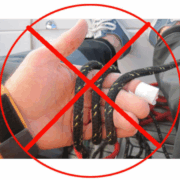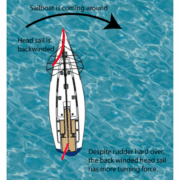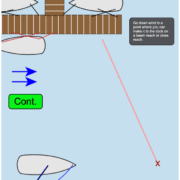Gybing trick
When you’re getting ready to gybe, take the jib lazy sheet and wrap it around its winch and pull quite tight. This will pull the jib towards the windward side of the boat just a little.
Now when you gybe, you don’t have to be so busy about pulling the jib sheet across quickly because it will almost be already set for the other side. You just need to trim it.
This technique also prevents the jib from wrapping around the front of the forestay which is a real pain to pull back once you’re through the wind.
So tighten that lazy sheet just before you gybe.









GYBING THE MAIN
Single handing the main while maintaining good control of the wheel can be challenging as the rope clutch for the main sheet is usually located over a coach roof several feet forward of the wheel and requires both hands to operate. A handy solution is to place your boat in a downwind point of sail, vang loose and let out the mainsheet to its optimal position with the boom not touching the shrouds and the sail only lightly touching the spreaders. Mark the mainsheet with an indelible laundry pen where it enters the rope clutch and install a stopper knot just aft and touching the mark; I like the Ashley’s(http://en.wikipedia.org/wiki/Ashley's_stopper_knot ). It is decorative, secure, but still easy to untie.
The stop knot enables you to release the main sheet after gybing as the knot will now stop the main sheet at the appropriate position without negatively impacting trim.
Other advantages include reduced wear on rigging, quicker repositioning of the main and elimination of the need to immediately view sail position through a bimini that may be obstructing your view.